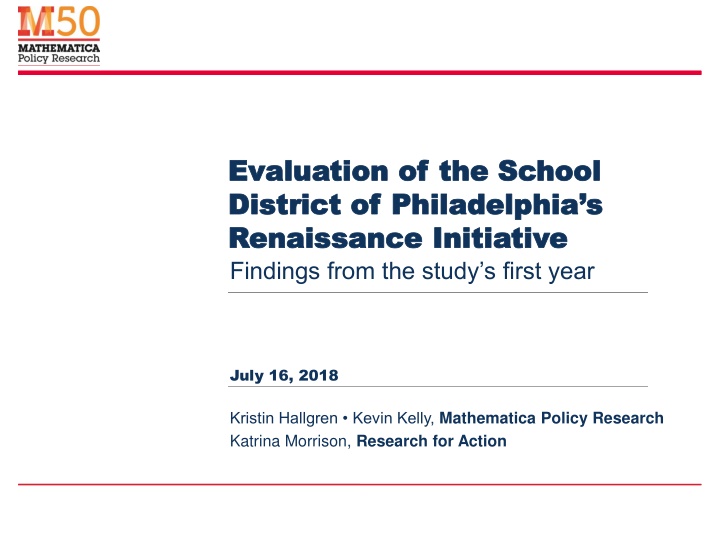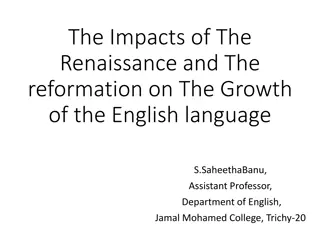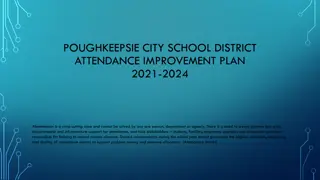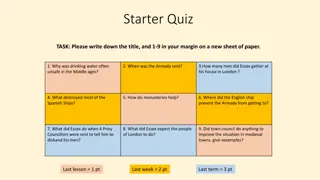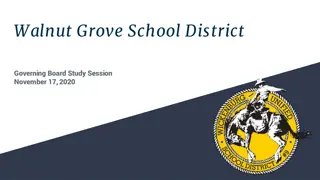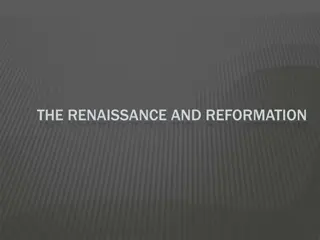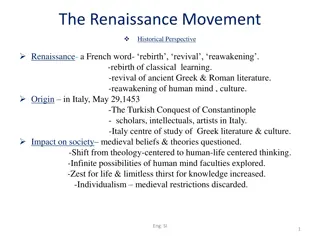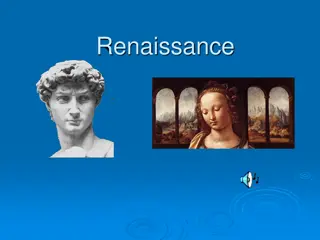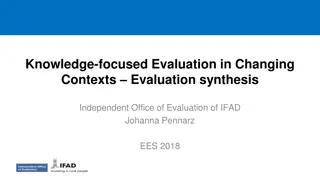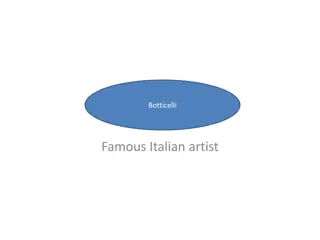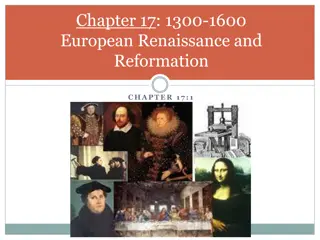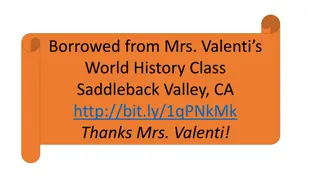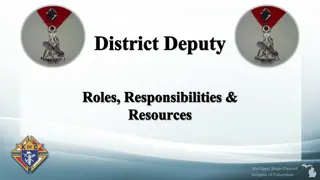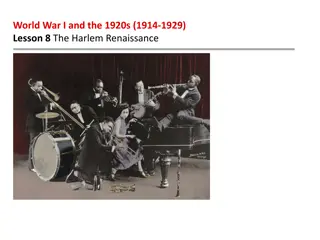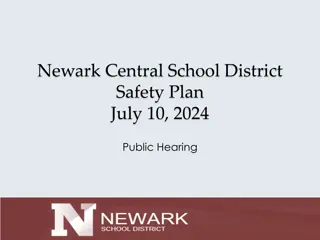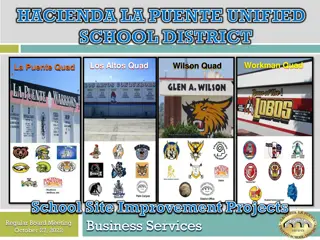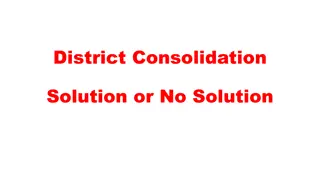Evaluation of School District's Renaissance Initiative Findings
This study presents key findings from the first year evaluation of Philadelphia's District Renaissance Initiative, including implementation insights, impact on student outcomes, and stakeholder perspectives. The report outlines a three-year evaluation plan, highlighting areas such as school improvement strategies, collaboration effectiveness, and behavioral interventions. The study explores the alignment of efforts with existing literature and aims to enhance academic achievement through tailored support programs and community engagement.
Download Presentation

Please find below an Image/Link to download the presentation.
The content on the website is provided AS IS for your information and personal use only. It may not be sold, licensed, or shared on other websites without obtaining consent from the author.If you encounter any issues during the download, it is possible that the publisher has removed the file from their server.
You are allowed to download the files provided on this website for personal or commercial use, subject to the condition that they are used lawfully. All files are the property of their respective owners.
The content on the website is provided AS IS for your information and personal use only. It may not be sold, licensed, or shared on other websites without obtaining consent from the author.
E N D
Presentation Transcript
Evaluation of the School Evaluation of the School District of Philadelphia s District of Philadelphia s Renaissance Initiative Renaissance Initiative Findings from the study s first year July 16, 2018 Kristin Hallgren Kevin Kelly, Mathematica Policy Research Katrina Morrison, Research for Action
Overview of todays presentation Overview of three-year evaluation plan Key findings Crosscutting implementation findings Findings within the five areas of the district s designated turnaround plan Findings specific to Renaissance Charter schools 2 2
Three year evaluation plan Report Year Key study activities Literature review Implementation analysis to understand context and supports for RI/TN during 2016/17 and 2017/18 school years, and the extent to which the efforts align with literature 1 Examine impact of Renaissance Charters and Turnaround Network on student outcomes Analysis of SDP stakeholder surveys as needed 2 Follow up implementation analysis for context and supports during 2018/19 and 2019/20 school years Examine impact of Renaissance Charters and Turnaround Network on student outcomes Conduct cost study 3 3 3
Respondents included in interviews/focus groups Respondent type District or CMO officials Principals Assistant Principals Instructional coaches Student support staff Teachers K-2 3-5 6-8 Special populations Parents Total Total respondents 11 7 6 15 14 22 12 13 9 21 130 Source: March 2018 site visits. CMO = charter management organization 4 4
Key implementation findings Administrators in some but not all schools regularly communicated a vision of collaboration and shared responsibility for the whole school s success Some turnaround supports could be more effective with increased collaboration or differentiation Addressing behavior and trauma remains paramount to improving student academic achievement Programming and resources that demonstrate a school s mission to support students and families have largely resolved initial community resistance 5 5
Challenges that created need for turnaround continue as barriers to success Schools experienced high staff turnover and faced recruitment challenges The designation as a turnaround school had negative connotations Principals needed more time and communication about their schools specific needs before opening their schools 6 6
Findings within the five areas of the districts designated turnaround plan 1) Cultivating turnaround principals 2) Teaching and learning continuous improvement 3) Professional growth 4) Health and safety 5) Community involvement 7 7
Cultivating turnaround principals Principals met regularly with their direct supervisors and district-level or CMO administrators Most staff had positive perceptions of principal leadership Some staff raised concerns about principal ability to encourage morale and provide instructional support 8 8
Teaching and learning continuous improvement Instructional coaching contributed to teachers professional growth, especially when the coach s role was clearly established I-Ready holds promise as a resource to inform teachers instructional practices, but persistent challenges complicated its use Some staff believed they lacked needed resources or expertise to effectively use available materials for improving instructional practices 9 9
Professional growth Differentiated professional development opportunities, informed through data, promoted professional growth more than generic trainings Summer boot camps described as generic and less customized than desired Staff from schools with consistent behavior routines reported greater engagement in professional growth opportunities Staff expended less energy on managing behavior and could focus on PD 10 10
Health and safety Staff expressed strong need for trauma-informed training for teachers and counseling for students and families Some schools had features of well-functioning school climates but these features were inconsistently implemented Comprehensive supports for students and families seemed most effective when based out of the school building Promoted family buy-in: the school demonstrated good intention to help the community Lack of staff collaboration in some schools posed challenges to providing comprehensive supports 11 11
Community involvement Schools used multiple opportunities for communication and outreach (e.g., in-person, written, email, text) that accommodated parents schedules and needs Schools benefited from dedicated staff who are liaisons (SISLs) between the school and community Liaisons helped align the services provided by the school with demonstrated needs of the community 12 12
Mastery at Wister Topic Key finding Key success, according to staff: The vision of the school and the largely Mastery- veteran workforce Cultivate principals Teaching and continuous improvement Professional growth Health and safety Need for PD on trauma-informed care; 4-person school culture team Community involvement community events Most administrators had served in leadership roles at other Mastery schools Data day followed by a week of re-teaching not-yet- mastered concepts 2 week-long trainings, weekly early dismissal, coaching cycles Parents sign children out of school; school hosts 14 14
GLA Southwest (Huey) Topic Key finding Key success, according to staff: Cultivate principals Teaching and continuous improvement Professional growth Health and safety Community involvement School leadership team facilitating a shared vision, community buy-in, and initiatives to improve student achievement Limited but needed-- initial and ongoing collaboration with SDP Curriculum materials not available for the first half of 2016-2017 school year because of a delayed contract Many staff are new to teaching. School has weekly and monthly PD but limited individual coaching or differentiated PD Improvements in behavior incidents, but need more consistent response to extreme behavioral challenges After strong community objections, the school developed community buy-in by hosting events and providing needed resources like food. 15 15
Wrap up Cohesive schools seemed to Handpick staff, experience less turnover, and report fewer vacancies Have consistent behavior routines that were implemented schoolwide Have clearly defined, cohesive, and not siloed roles and responsibilities Celebrate successes of students, teachers, and the school Acknowledge and consider the community context Which made space for: Collaborative teams Engagement in professional development opportunities and data use Opportunities for reteaching on a regular basis Academic learning and growth 16 16
For more information Joy Lesnick, School District of Philadelphia Kristin Hallgren, Mathematica KHallgren@mathematica-mpr.com, 609-275-2397 17 17
